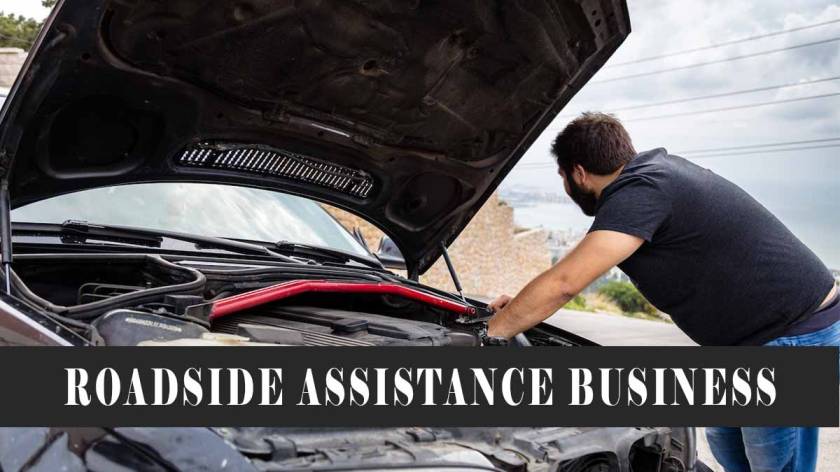Are you interested in venturing into the roadside assistance business but prefer not to deal with the complexities of towing? You’re in the right place!
In this comprehensive guide, we’ll walk you through the steps to start a successful roadside assistance business without towing, highlighting the key aspects, strategies, and tools you’ll need to get started.
What is Roadside Assistance Business?
A Roadside Assistance Business is a company or service that provides help to motorists who experience problems with their vehicles while on the road.
These problems can include breakdowns, flat tires, dead batteries, running out of fuel, lockouts, and other situations that leave a driver stranded.
Roadside assistance services are typically offered through membership programs or on-demand services, and they aim to provide timely assistance and support to get the driver back on the road safely.
Key services offered by a Roadside Assistance Business may include:
Towing: Transporting a disabled vehicle to a repair shop or another location.
Jump-starts: Providing a boost to a dead battery to start the vehicle.
Tire changes: Replacing a flat tire with a spare or providing repair services.
Fuel delivery: Delivering enough fuel to allow the driver to reach the nearest gas station.
Lockout assistance: Helping drivers who have locked their keys inside their vehicles.
Winching and extrication: Assisting vehicles stuck in mud, snow, or other challenging situations.
Minor mechanical repairs: Provide basic roadside repairs to get the vehicle running again.
Emergency medical assistance: Offering basic first aid or calling for medical help if needed.
Roadside assistance businesses may operate independently or as part of larger organizations, such as insurance companies, automotive clubs, or vehicle manufacturers.
Many people rely on these services for peace of mind when driving, knowing that help is just a phone call away in case of an emergency or unexpected vehicle trouble.
In this guide, I write about How you can easily start your Roadside Assistance Business without Towing.
Roadside Assistance Business: No Towing Required
Starting a roadside assistance business without towing may seem unconventional, but it’s a niche that offers great potential for success.
While towing services are a common aspect of roadside assistance, there are various other services you can provide to motorists in need.
Here’s how you can embark on this entrepreneurial journey:
1. Market Research and Analysis
Before diving into any business venture, it’s essential to understand the market. Conduct thorough market research to identify the demand for non-towing roadside assistance services in your area.
Look for gaps in the existing market and assess your potential competitors.
Analyze customer preferences and pain points to tailor your services accordingly.
2. Define Your Services
Now that you have a grasp of the market, it’s time to define your services. Consider the following non-towing assistance options:
a. Jump Starts
Offering battery jump-start services is a valuable option. Many motorists face dead battery issues, especially during extreme weather conditions.
b. Flat Tire Assistance
Changing a flat tire can be a daunting task for many drivers. Provide tire changing and repair services to help them get back on the road quickly.
c. Lockout Assistance
Locked out of their vehicles? Offer lockout assistance services, which involve helping customers regain access to their cars when they’re locked out.
d. Fuel Delivery
Running out of gas can happen to anyone. Offer fuel delivery services to provide stranded drivers with the fuel they need to reach the nearest gas station.
e. Minor Mechanical Repairs
If you have the necessary skills and tools, consider providing minor mechanical repairs such as fixing overheated engines, replacing belts, or addressing electrical issues.
3. Legal Considerations
Starting any business requires complying with legal regulations. Here are some key steps to consider:
a. Business Registration
Register your business with the appropriate government authorities. Choose a suitable business structure, such as an LLC or sole proprietorship.
b. Insurance
Invest in liability insurance to protect your business in case of accidents or damages while providing roadside assistance services.
Hc. Permits and Licenses
Check local and state requirements for permits and licenses related to your specific services. Ensure you obtain all necessary permissions to operate legally.
4. Business Plan Development
Create a comprehensive business plan that outlines your goals, target market, marketing strategy, financial projections, and operational procedures.
A well-thought-out business plan is essential for securing funding, attracting investors, and guiding your business’s growth.
5. Equipment and Tools
To deliver high-quality roadside assistance services, invest in the right equipment and tools. Depending on your chosen services, you may need:
a. Jump Starter Kit
Include jumper cables, a portable jump starter, and a battery tester in your kit.
b. Tire Repair Tools
Equip yourself with tire-changing tools, an air compressor, and tire repair kits.
c. Lockout Tools
Invest in lockout kits designed to unlock car doors without causing damage.
d. Fuel Containers
Carry fuel containers to deliver gas to stranded motorists safely.
e. Basic Repair Tools
If offering minor mechanical repairs, stock up on essential tools like wrenches, pliers, and diagnostic equipment.
6. Pricing Strategy
Determine competitive yet profitable pricing for your services. Consider factors like the complexity of the service, labor costs, and market demand when setting your rates. Be transparent with your pricing to build trust with customers.
Read Also: Start Your Own Law Firm – A Step-by-Step Guide
7. Marketing and Promotion
Effective marketing is crucial for attracting customers to your roadside assistance business. Here are some strategies to consider:
a. Online Presence
Create a professional website with information about your services, pricing, and contact details. Optimize it for search engines (SEO) to enhance visibility.
b. Social Media
Leverage social media platforms to connect with potential customers. Share informative content, customer testimonials, and promotions.
c. Local SEO
Focus on local SEO to ensure your business appears in local search results. Register your business on Google My Business and other local directories.
d. Networking
Build relationships with local auto repair shops, insurance companies, and car dealerships. These partnerships can lead to referrals.
8. Customer Service Excellence
Providing exceptional customer service is key to building a solid reputation. Be responsive to customer inquiries, arrive promptly at service calls, and ensure your staff is courteous and knowledgeable.
9. Operations and Scheduling
Efficiently manage your operations by implementing a reliable scheduling system. Ensure your services are available 24/7 to assist customers in emergencies.
10. Continuous Improvement
Regularly evaluate your business’s performance and seek ways to improve your services. Customer feedback is invaluable for making necessary adjustments.
Conclusion
Starting a roadside assistance business without towing is a viable and lucrative venture, offering essential services to motorists in need.
By conducting thorough market research, defining your services, and adhering to legal requirements, you can establish a successful business.
With the right equipment, pricing strategy, and marketing efforts, you’ll be well on your way to providing top-notch roadside assistance.
Read Also: 10 Side Hustles That Pay Weekly
[Frequently Asked Questions] FAQs
Q 1. What services can I offer in a non-towing roadside assistance business?
In a non-towing roadside assistance business, you can offer services such as jump starts, flat tire assistance, lockout assistance, fuel delivery, and minor mechanical repairs.
Q 2. What legal considerations should I be aware of when starting this business?
Ensure you register your business, obtain the necessary permits and licenses, and invest in liability insurance to protect your business from potential accidents or damages.
Q 3. How can I effectively market my non-towing roadside assistance business?
Create a professional website, optimize it for local SEO, use social media for promotion, and build partnerships with local businesses like auto repair shops and car dealerships.
Q 4. What equipment do I need for a non-towing roadside assistance business?
You’ll need equipment like a jump starter kit, tire repair tools, lockout tools, fuel containers, and basic repair tools, depending on the services you offer.
Q 5. How can I ensure excellent customer service in my business?
Be responsive to customer inquiries, arrive promptly at service calls, and train your staff to be courteous and knowledgeable to provide top-notch customer service.




